
There are varied reasons people hang on to things they don’t need based on their circumstances or deeper-lying struggles. A cluttered home—even one that would qualify as a Level 5 situation—doesn’t stem from laziness or lack of willpower.
More often than not, a cluttered home is the result of a difficult-to-control situation, which is part of normal life.
What’s the source of your clutter? Following, are a few factors that may be contributing to your at-home clutter:
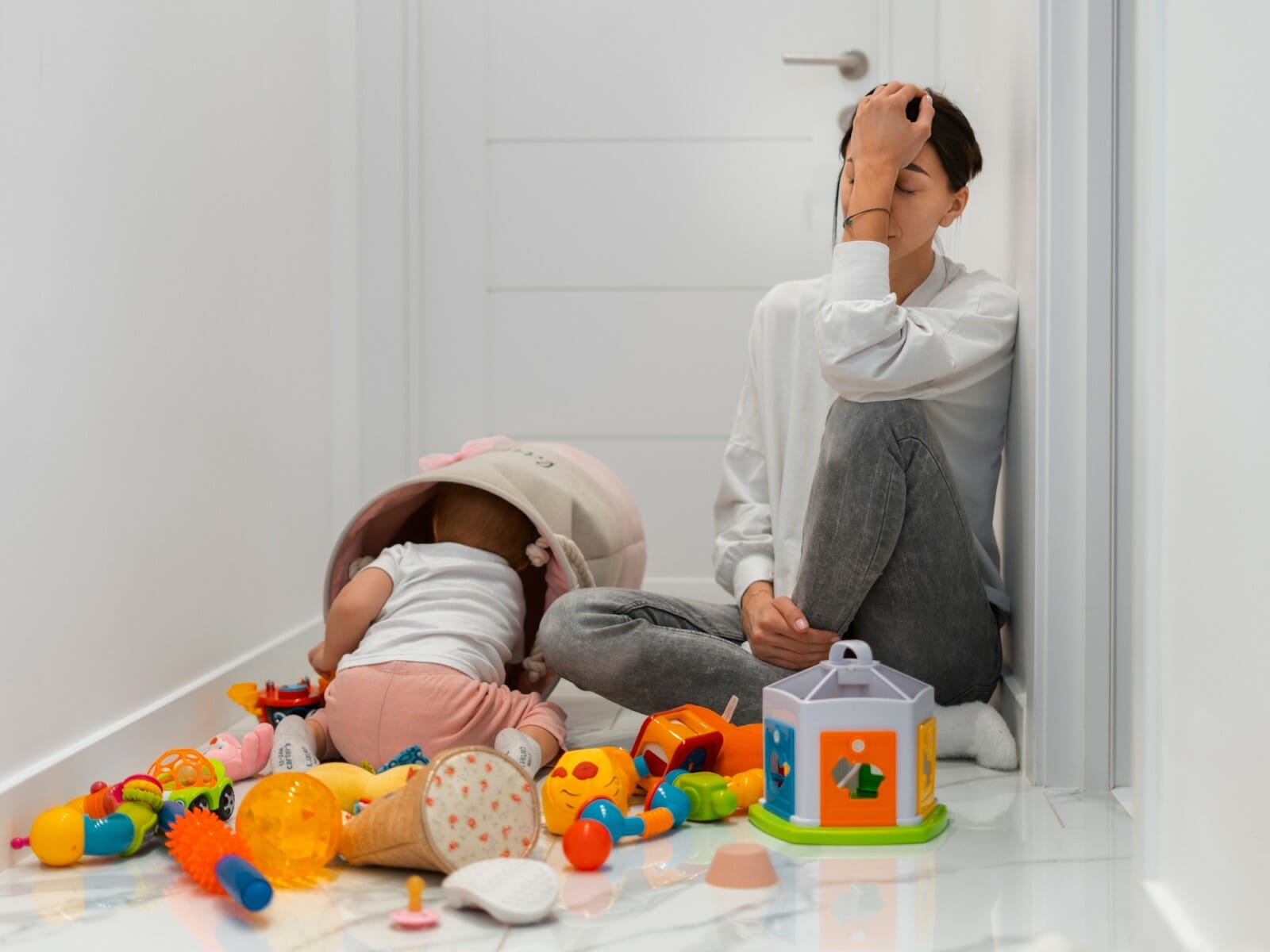
Having children can bring an abundance of joy, but also plenty of clutter.
Baby gear that is only used for a short period of time, rapidly changing clothes sizes, and piles of toys accumulate quickly.
It doesn’t end with the baby phase, though. As all guardians know, older kids and teens bring their own messes into the home.
Food-related messes combined with sleep deprivation can make it difficult to keep up with housework.
With children leaving clutter everywhere and food-related messes needing immediate care, it can be difficult to keep up with housework. Especially when you consider the sleep deprivation that also comes with kids.
Between art and science projects on the counter and smelly gym bags and laundry
left around the house, things can get (or stay!) messy.
It doesn’t help that children aren’t well-known for cleaning up after themselves!
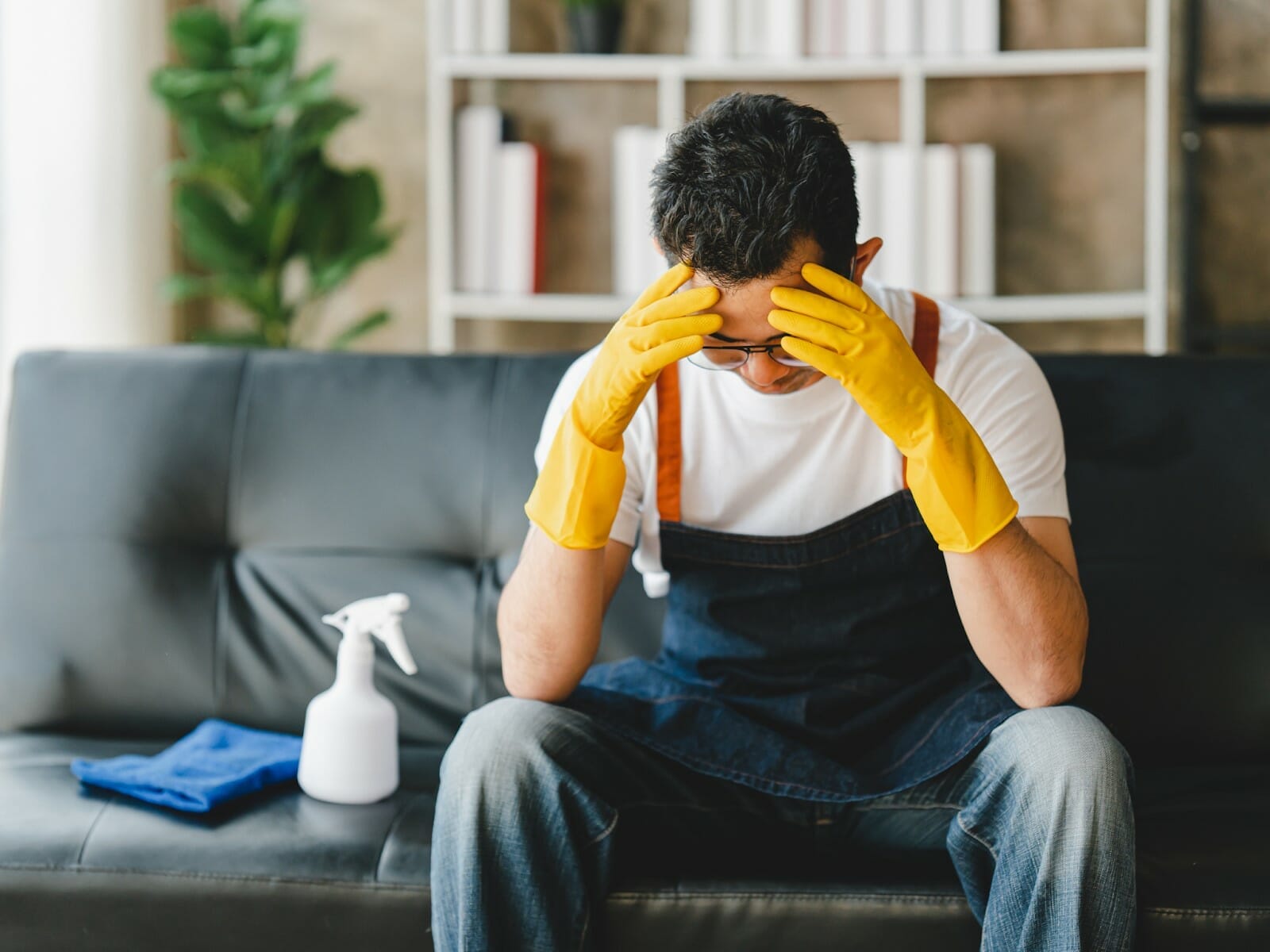
As adults age, they may struggle to keep up with their housework.
Think of all the reaching and bending over. Consider all the hard scrubbing. With health issues, simple cleaning tasks take much longer to accomplish, if it can still be done.
Decreased mobility and increased health issues can make cleaning overwhelming or even impossible.
In addition, it can be difficult to let go of possessions accumulated over a lifetime.
Anxiety can make it difficult to throw away possessions.
People with anxiety may hold on to items in excess in case of a feared emergency or indecision about what to do with items.
Finding the motivation to clean and declutter is often a struggle for someone suffering from depression.
The stress of an out-of-control home situation (whether it’s actually out of control
or simply perceived to be) can create a negative feedback loop.
For example, maybe you’re struggling with depression and lack the motivation to do the dishes. This means the dishes quickly pile up and within a week or two every surface in your kitchen could be covered in dirty dishes.
Now, you’re facing an overwhelming mess that can make you feel even worse—piling on exhaustion, guilt, and shame—and making you even less likely to find the motivation to clean up.
This cycle can leave those struggling with depression feeling more overwhelmed and less able to approach their home situation.
Individuals with ADHD often have intense, passionate interests and may accumulate items related to that interest. In addition, it can be difficult for a person with ADHD to create and stay focused on a plan for a big cleaning project. Anytime there are multiple steps involved, it’s easy for people with ADHD to get distracted.
Obsessive-compulsive disorder is characterized by obsessive, intrusive thoughts and compulsive behaviors. People with OCD sometimes deal with anxieties and emergencies by compulsively buying items. They may have obsessions about running out of essential items or a buying ritual that is difficult to break out of.

Trauma can be a trigger for accumulating clutter. If someone grew up without:
They may feel driven to hold onto things rather than throw them away when they are no longer needed. Research shows that childhood emotional abuse and physical neglect in particular predict higher levels of hoarding symptoms.
People who have experienced loss may also accumulate possessions to soothe the ache of missing their loved one. Buying new things triggers a brief dopamine high, bringing temporary emotional relief.
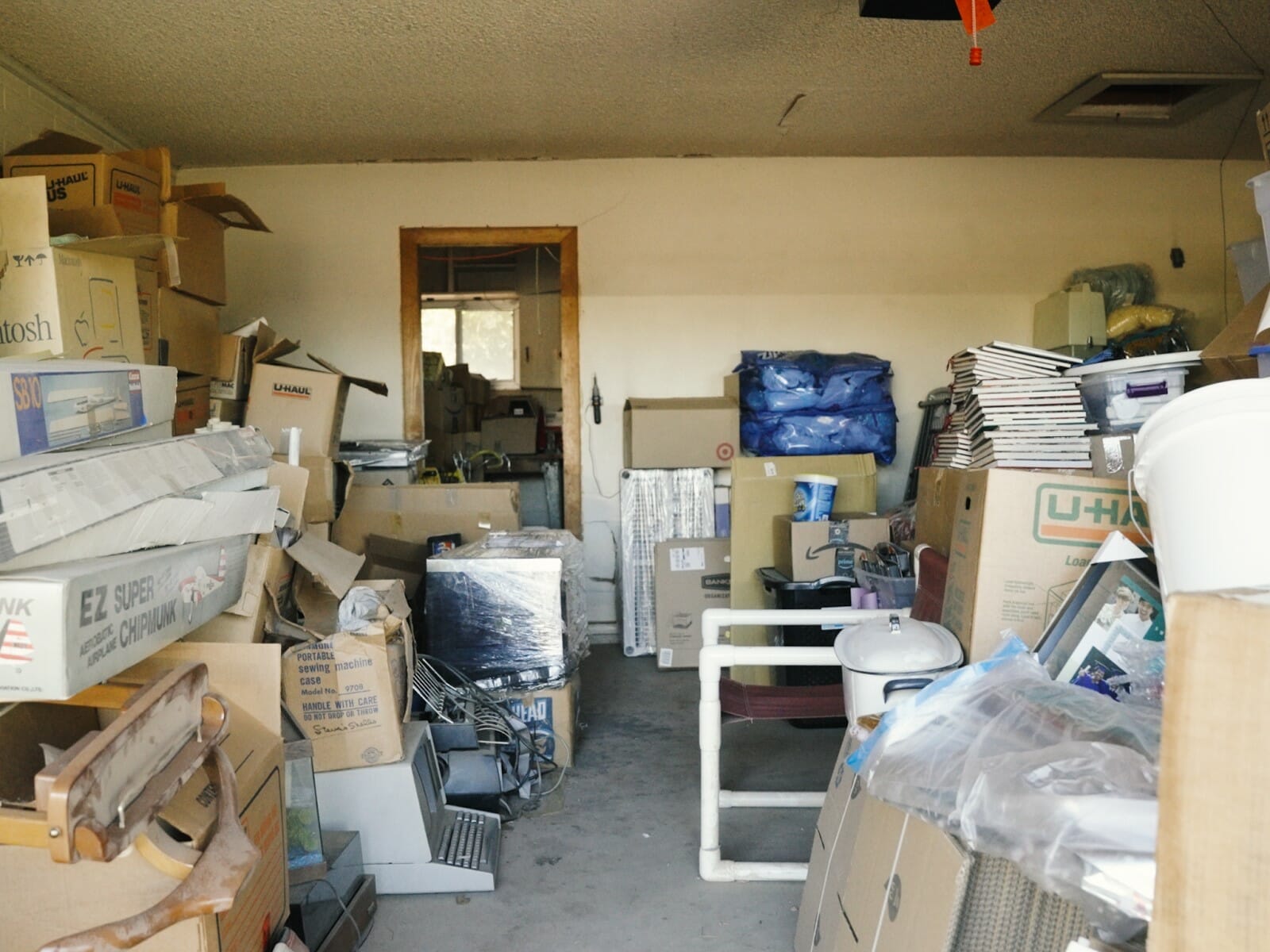
If you grew up in a home where clutter was common, you are more likely to show these behaviors yourself. You may have a genetic disposition toward it through related diagnoses like anxiety or depression. You may also be more used to an environment where clutter, mess, and even the higher levels of hoarding are the norm.
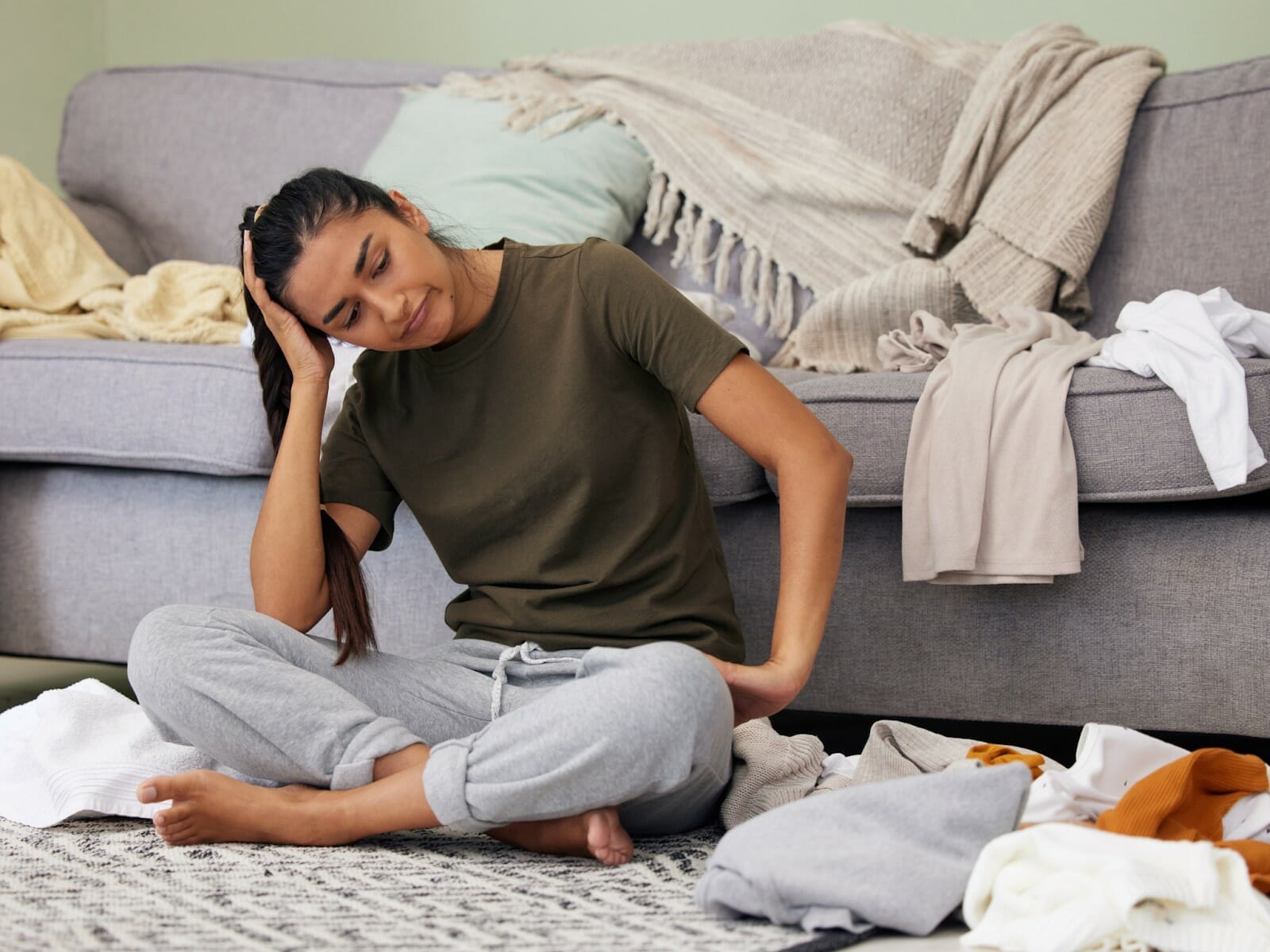
No matter the reason clutter starts, it’s normal to feel overwhelmed and stressed by the situation. Home maintenance is a big task under any conditions. Certain factors can make the situation feel impossible such as:
Stress can lead to disorganized homes, and disorganized homes can increase stress. Natalie Christine Dattilo, PhD, clinical health psychologist and instructor of psychiatry at Harvard Medical School, calls it a chicken-or-egg dilemma.
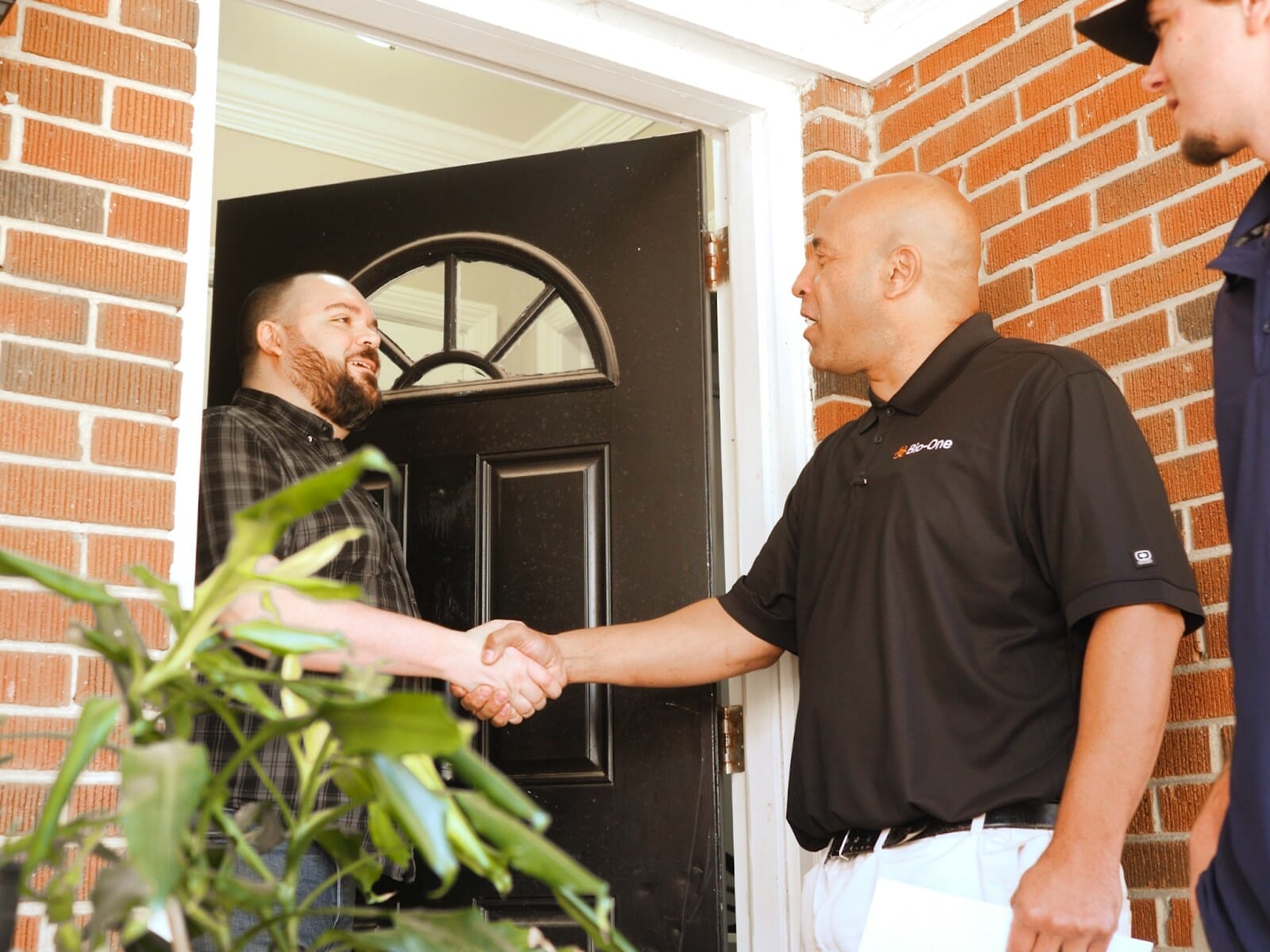
“Recent studies have shown that clutter in our homes is associated with higher cortisol levels [our stress hormone], but it’s still unclear which comes first,” says Dattilo.
“Is it that when we are under stress, our ability to maintain a well-organized home becomes impaired? Or when our home is in disarray, does that make us feel more stressed, overwhelmed, and anxious?”
Regardless of the root of the issue, there is a way out. Resources are available to help you deal with your home situation. Bio-One can help! Our services can help ease your stress. For more information on how we can help you with your clutter call (915) 588-2934.
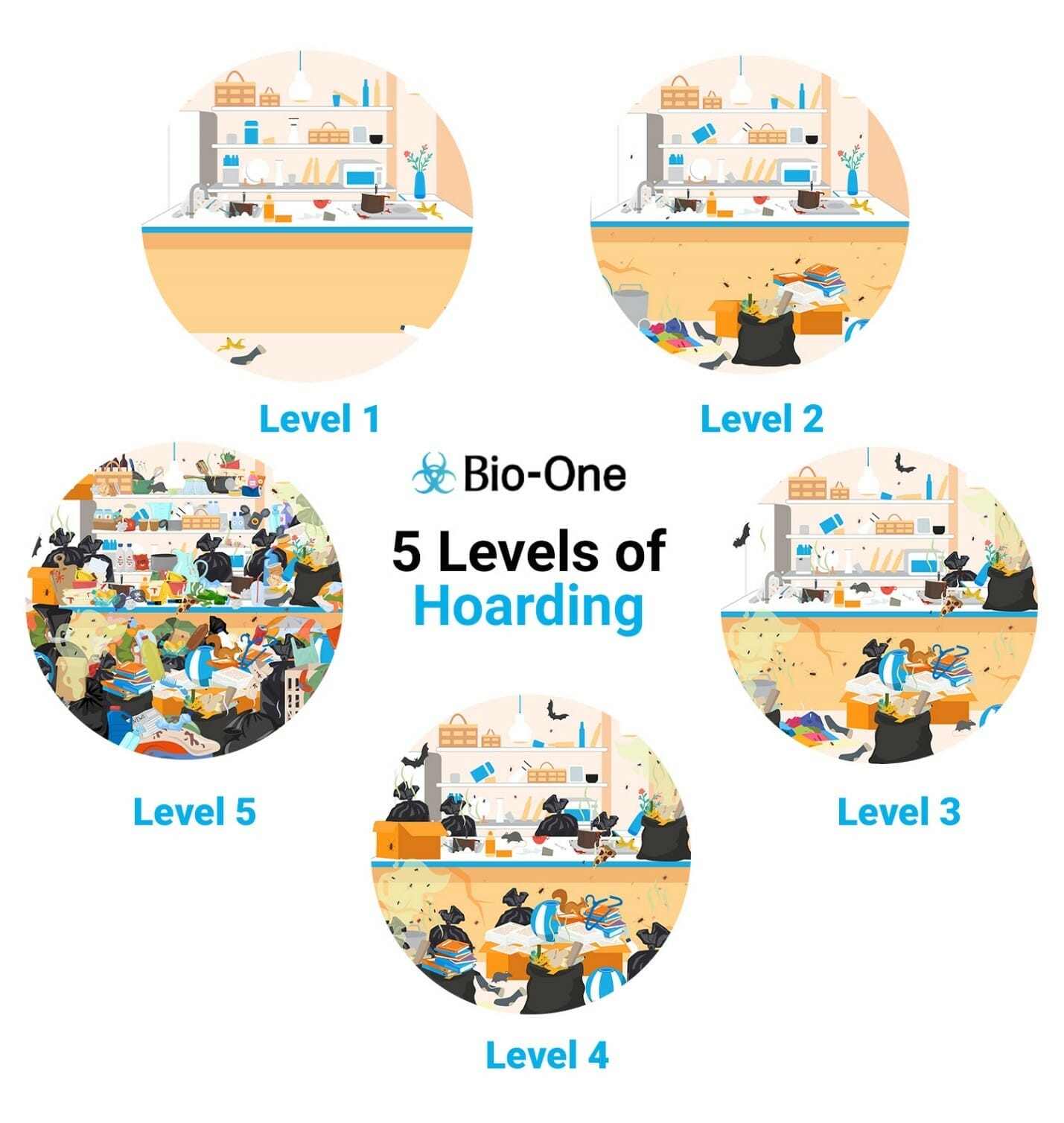
The word “hoarding” probably evokes a particular image, made more common by shows like Hoarders that highlight extreme examples. In reality, not all hoarders have rooms full of items piled high to the ceiling.
The Institute for Challenging Disorganization (now, there’s a relatable title!) has classified hoarding behavior into five levels on their Clutter-Hoarding Scale.Level 1 Hoarding

At Level 1, a home is not pristine, but the space is still easily accessible and sanitary. There is clutter, but no concern for safety. Most, if not all of us, have been in Level 1. Many people spend most of their time in this stage.
Here are the defining characteristics of this level:
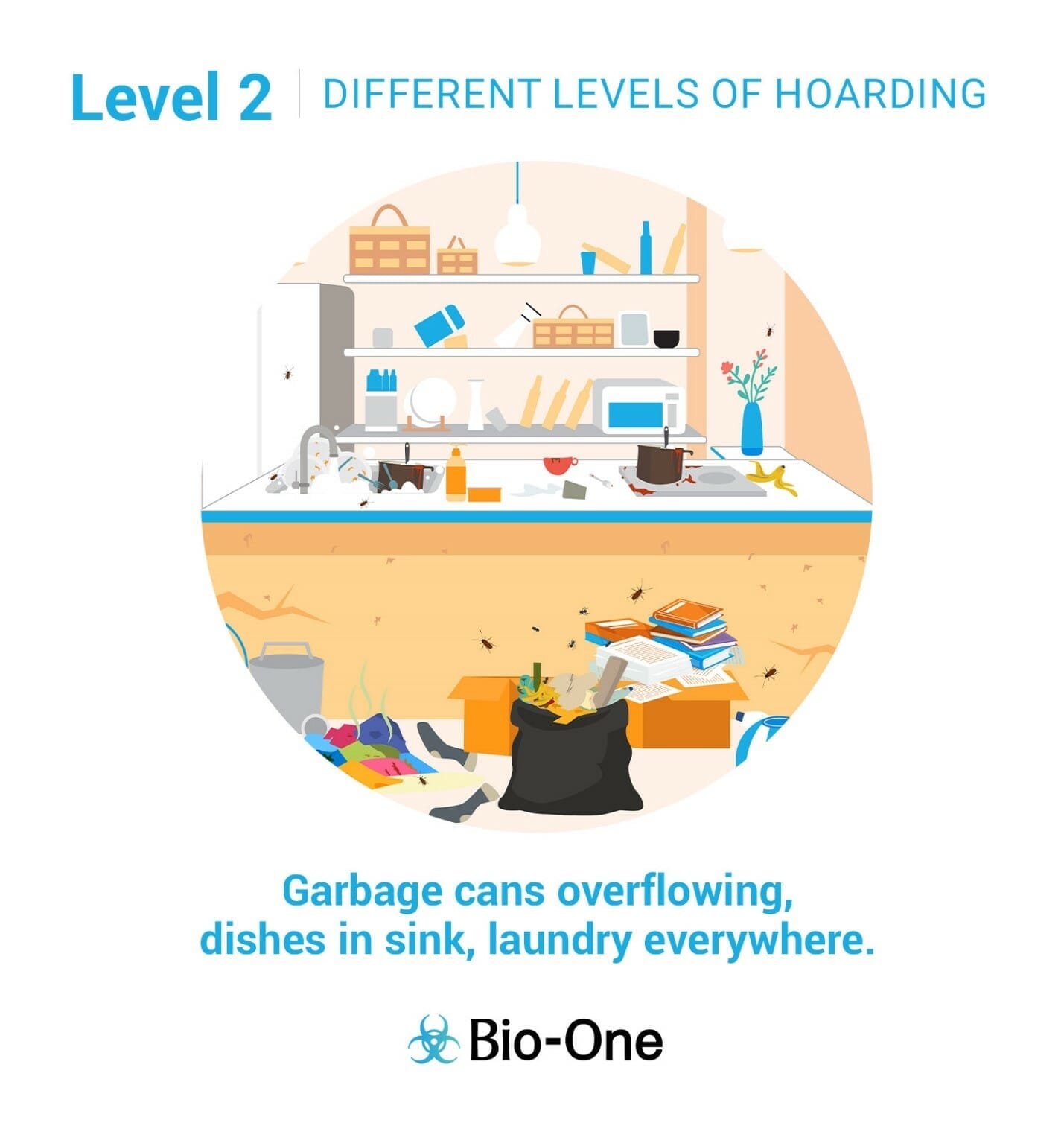
At Level 2, the home is still very livable, but there’s more evidence of disarray. The home is in need of cleaning and may be starting to overwhelm the residents. The hygiene level isn’t optimal.
Most of us bounce between Level 1 and Level 2. However, here are the more defining characteristics of Level 2:
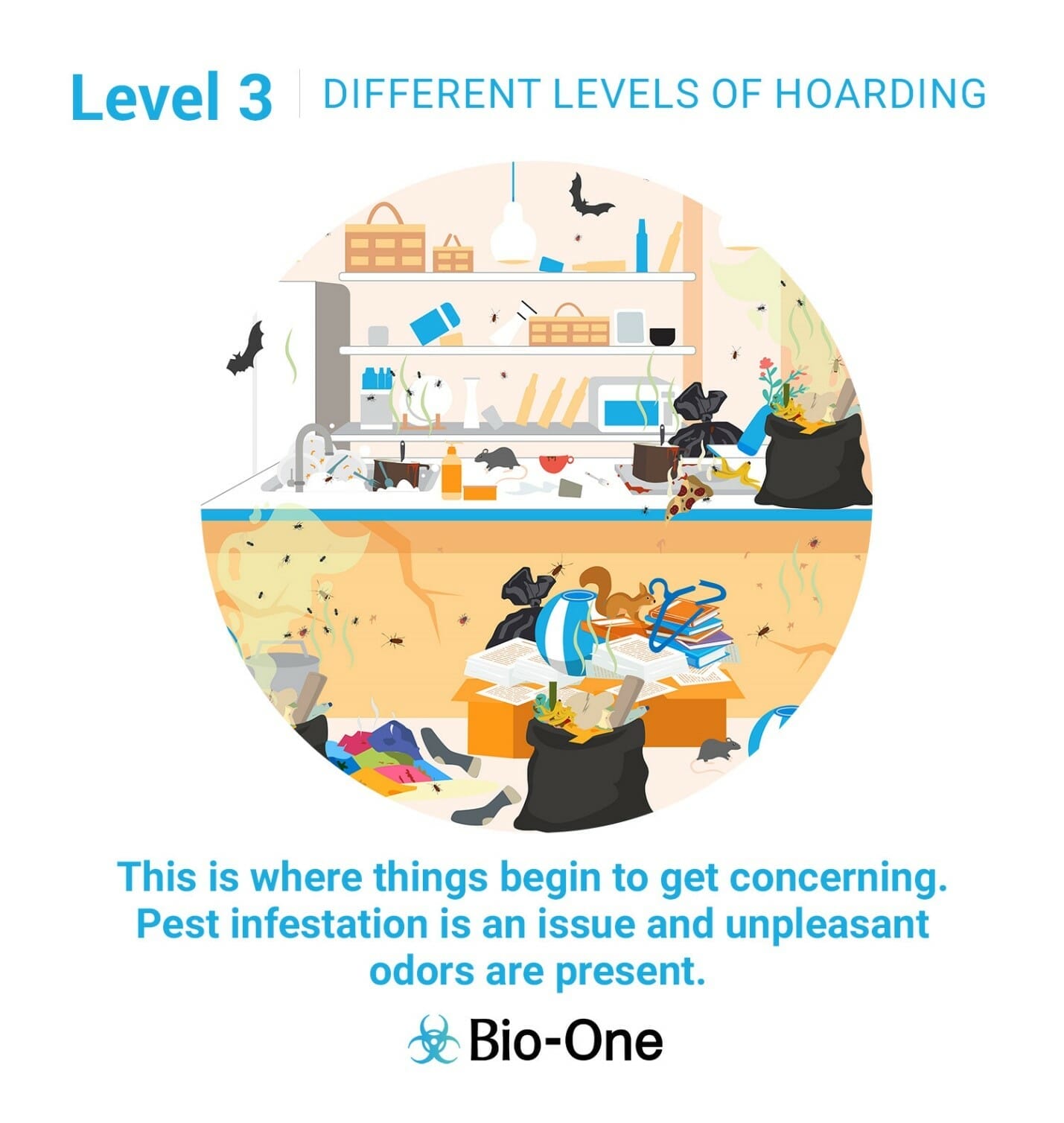
Level 3 is considered the turning point between manageable household disorganization and a more serious issue. Level 3 homes show extreme disorganization and indicate hoarding behavior.
Here are the defining characteristics of this level:
Level 3 households should consider hiring outside help. Although, it’s still possible to get it under control with a concerted effort from the whole family

At Level 4, the home shows excessive clutter.Those living in Level 4 conditions need professional help. At this level, part of getting help includes professional cleaning to transform the house into a safe, hygienic space where people can thrive. Mental health counselors and social workers may also step in to help residents change their habits.
Here are the defining characteristics of this level:
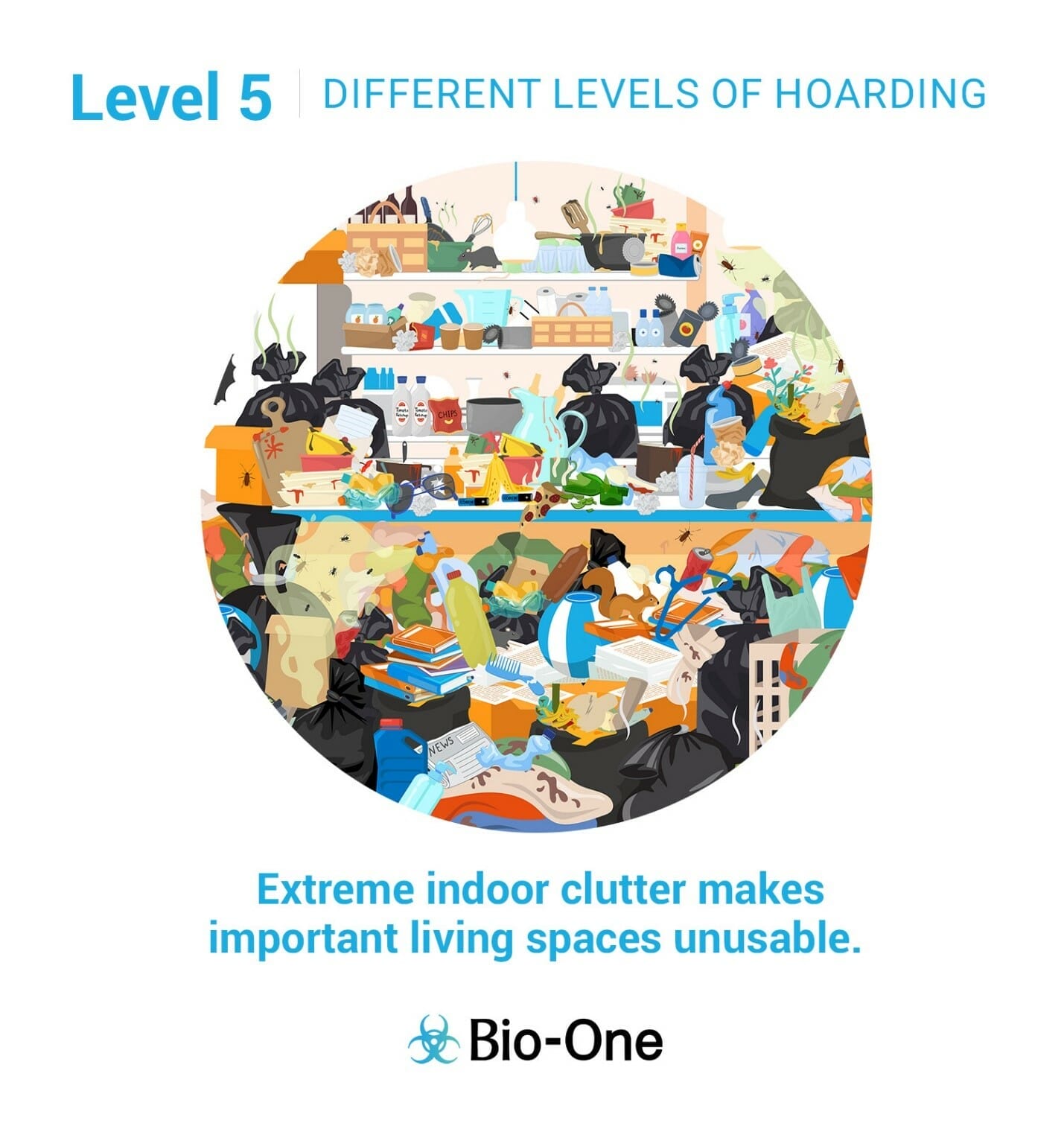
Level 5 is the highest level of hoarding behavior. Level 5 homes are alarmingly hazardous.
They require professionals with safety equipment and training to clean.
Here are the defining characteristics of this level:
If you or someone you know is struggling with these levels of hoarding we are here to help.
You can find more information at https://biooneelpaso.com/ or contact us at (915) 588-2934

Bio-One teams across the U.S. answer calls to help their communities and remediate a variety of scenes. In our new blog series, we'd like to bring you into the Bio-One world by sharing stories of the unique and important work we do for local communities.
Here is Week 5 of our Bio-One Weekly Wrap-Up.
Chocolate Spill Makes for a Sweet Cleanup
In Scranton on March 25, Juan and Nicole Morales received a call for a "chocolate" cleanup. Assuming this was code for a sewage back-up, they rushed to scene to find a different situation entirely. Approximately 100 gallons of milk chocolate had spilled, covering asphalt outside a local business.
This is certainly the sweetest smelling job a Bio-One office has ever taken, but Nicole clarified, "That smell was nice for the first few minutes but at the end I felt sick. Good thing we had an awesome team that pushed through and got this done!"
After scraping the chocolate with a forklift and pressure washing the area, the Bio-One team received a five-star review. Well done!


Behind the Scenes with Citizen's Academy
Many Bio-One owners sign up for their local Citizen's Police Academy to acquaint themselves with the activities of their local police department. This week, Bio-One owner, Ginger Akemon, in Jacksonville, FL earned her Citizen's Police Academy certificate from the Clay County Sheriff's Office.
"Definitely a learning process. Each County has their own, my goal is to go to each county's classes. This was 10 weeks long and over an hour drive each way, but well worth it, " said Ginger.
Hoarding Transformation in Long Beach
In Long Beach, the Bio-One team has been working hard on several hoarding projects. These before and after pictures show the detail and expertise our teams bring to each job.

Bio-One teams across the U.S. answer calls to help their communities and remediate a variety of scenes. In our new blog series, we'd like to bring you into the Bio-One world by sharing stories of the unique and important work we do for local communities.
Here is Week 4 of our Bio-One Weekly Wrap-Up.
New Start for New Haven Veteran
In New Haven County, Bio-One and Junkluggers answered the call to help a veteran and his disabled wife. The couple were overwhelmed with a hoarded home and much of their furniture would need to be disposed due to biohazardous conditions. With Bio-One's Help First, Business Second motto in mind, Bio-One owner, Matthew Hill, teamed up with Junkluggers to re-furnish the home with gently used furniture at no cost to the client.
“Anytime we can give a little more to our clients, we always seize the opportunity,” said Hill. “Junkluggers has been an awesome organization with a great mission that fits nicely into what we are trying to accomplish.”

#HelpFirst for Heart-Breaking Scene
In South Carolina, Bio-One owner, Kris Elliott, was called to disinfect and clean a heart-breaking trauma scene. After hearing the family's story, he generously decided not to request payment for his services and shared their GoFundMe page on Facebook. As of March 20, Bio-One offices in North Carolina and South Carolina have contributed just under half of the total donations. This is #helpfirst at it's finest.
If you'd like to learn more about the family and donate, please visit their GoFundMe page.
Poker Run Supports Law Enforcement
Supporting local law enforcement is a 24/7 activity at Bio-One! In Tuscon, AZ, the Bio-One team participated in the South Arizona Law Enforcement Foundation (SALEF) poker run. SALEF collaborates with law enforcement to understand their greatest needs, and work with businesses in the community to raise money by presenting community events and submitting for grants.
Looks like they were gifted a beautiful day for cards, corn hole, and backing the blue.

Bio-One teams across the U.S. answer calls to help their communities and remediate a variety of scenes. In our new blog series, we'd like to bring you into the Bio-One world by sharing stories of the unique and important work we do for local communities.
Here is Week 3 of our Bio-One Weekly Wrap-Up.
Five 30 Yard Dumpsters
The team in Pensacola has been working non-stop on a two story home that required Bio-One hoarding services. Over the course of five days, they filled five 30 yard dumpsters, and found multiple antique pieces, photographs, sentimental items and cash that was promptly turned over to the client.
Look through the transformation photos on their Facebook page!
Backing the Blue in Omaha
The Bio-One team in Omaha dropped off bagels at the Omaha Police Department just before roll call, and Vanessa Urbach, the civilian crime and prevention specialist, tweeted a "Thank You" with shoutouts to Bio-One. Joining the conversation was our own Bio-One Twitter handle, Deputy Chief Ken Kanger, host of the What's Up Omaha Podcast, and a number of other officers in the department.
Kudos to the Omaha team for backing the blue!
Safety First
Before Bio-One teams can help first, we have to ensure safety for every technician on the job site. This week, Bio-One owners took part in conversations about safety. Topics ranged from preventing common injuries on the job to attending OSHA training with Bob Easter. Jared Lafferty, Bio-One owner in Gwinnett County, even took the conversation to Twitter and featured safety protocols his team uses while on the job.
We couldn't be prouder of our teams for putting safety first!

Bio-One teams across the U.S. answer calls to help their communities and remediate a variety of scenes. In our new blog series, we'd like to bring you into the Bio-One world by sharing stories of the unique and important work we do for local communities.
Here is Week 2 of our Bio-One Weekly Wrap-Up.
14,000 lbs of Clothing Removed from Hoarded Home
In Indiana, the Marion County team remediated over 30+ years of hoarded clothes in a home. The team calculated that approximately 14,000 lbs of clothing were removed.
Bio-One’s teams know that every job represents a unique experience for our customers, who may have difficulty parting with deeply personal items that can range from clothing, video tapes, trash, and even animals.
Read our recent blog post answering common questions about animal hoarding.
We work with all of our clients in a step-by-step process that instills trust while properly ridding the space of items that can prove harmful. Learn more about Bio-One's hoarding services.
Bio-One Welcomes Two New Offices in Wisconsin
Two Bio-One offices launched in Wisconsin this week, and we are very excited to welcome Angela, David, Andrew, and Viktoriya to the Bio-One family. Learn about these amazing teams below!

Madison, WI
Angela Welbes and David Levin are the owners of Bio-One of Madison. Both were born and raised in the midwest, and they met in 2015 while they were both living in Wisconsin. Their blended family consists of 3 daughters and a son. The COVID pandemic provided a personal reset that enabled an opportunity to join the growing Bio-One family and the ability to help the surrounding communities of Madison. They are excited to start this new venture together.

Milwaukee, WI
Andrew and Viktoriya Gonzales are the owners of Bio-One of Milwaukee. Andrew spent the last 24 years in the banking industry, in addition to serving on boards and committees for several Non-Profits, such as NAMI, Madison Development Corp and United Way. Viktoriya originally came to Wisconsin 16 years ago to further her education and loved it so much, she decided to stay. She has spent the last 12 years in telecommunications and management. Both have a passion for giving back to their community and have a drive to help those in the Milwaukee and surrounding area who are in need.
COVID-19 Disinfections Help Seniors in Charlotte, NC
This week, the Bio-One team in Charlotte, NC announced the renewal of a COVID-19 disinfection partnership with the Mecklenburg County Department of Social Services. This unique #HelpfFrst service offers free disinfections to seniors, 60 years of age or older. See their Facebook post below to learn more.